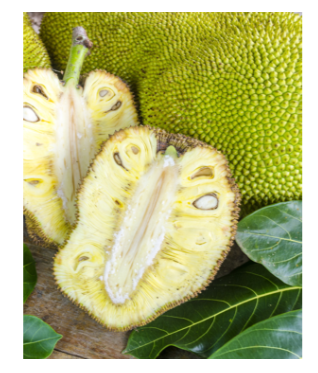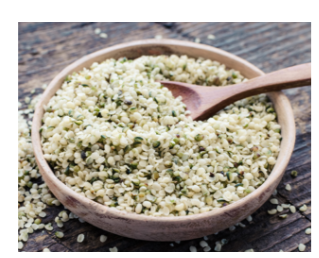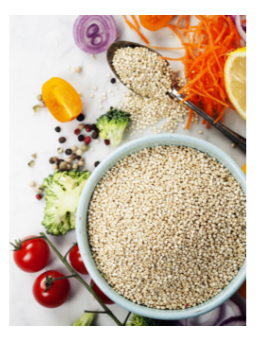Staff Writer
It is accepted that the human body needs appropriate amounts of protein in order to stay fit and healthy. Protein power repairs tissue, manufacture enzymes, hormones, and other essential chemicals. It is essential to build bones, muscles, cartilage, skin, blood as well as for hair and nail growth. It also supports our immune health and provides energy. Since we need large amounts of protein in our body it is called a macronutrient.
Our bodies do not store protein as it does fat for example. As a result, the DRI (Dietary Reference Intake stipulates 0.36 grams per pound or 0.8 grams of protein per kilogram of body weight each day. Some experts have argued that we need higher amounts. But one thing that is indisputable is that protein plays a vital role in keeping us in good health.
Meat and eggs are the primary source of dietary protein for the majority of people who include meat or animal products in their diets. Vegans and vegetarians do not eat these products so they need to make sure they are incorporating protein-rich plant-based foods in sufficient quantities to stay healthy. There are many plant-based alternatives to meat that pack a protein punch on any plate. We will take a closer look at 3 of the popular choices that are becoming fast favorites and even staples.
JACKFRUIT
Have you seen the series of TV Commercials featuring the Comedian and Actor Kevin Hart? In one of them, he is at the Check-out Counter paying for purchases with a particular credit card, and one item is checked which is large, green and somewhat indeterminately shaped. He asks the cashier; “Can you double-bag this? Can you also tell me what it is?” I suspect many people watching had the same question. Well, ladies and gentlemen, that is the humble yet hard-to-miss Jackfruit.
The jackfruit is a member of the fig, mulberry and breadfruit family. It is the largest fruit from a tree anywhere in the world. It can weigh up to 100 pounds and reach three feet in length. The average size is usually around 10-25 pounds. However, we must warn that if you are sensitive or allergic to latex, you should avoid handling raw jackfruit – it secretes a substance that can cause anaphylactic shock.
The jackfruit is becoming increasingly popular providing a variety of ways that it can be enjoyed. First off, the fruit is generally eaten ripe. It boasts a very sweet taste similar to mango and pineapple. Secondly, when the seeds are boiled, baked or roasted they make enjoyable, healthy snacks. The taste and flavor have been described as being milky sweet and are often compared to the taste of brazil nuts, chestnuts or macadamia. Lastly, the jackfruit is increasing in popularity as a plant-based meat alternative. This is probably due to its meat-like texture when cooked. Only the unripe fruits are cooked. It absorbs both sweet and savory flavors during cooking making a great replacement for meats such as pulled pork or shredded chicken.

The seeds, as well as the fruit of the jackfruit, are very nutritious. The seeds are high in protein, potassium, calcium, and iron. And according to the United States Department of Agriculture, a cup of raw, sliced jackfruit contains:
• 157 calories
• 2.84 g of protein
• 1.06 g of fat
• 38.36 g of carbohydrates • 2.5 g of dietary fiber
• 31.48 g of sugars
• 48 mg of magnesium
• 739 mg of potassium
• 22.6 mg of vitamin C
So it is clear that the jackfruit is a nutritious and sustainable food that provides important nourishment. It is being credited with potential medicinal benefits. According to a number of studies referenced in an article online by Charlotte Lillis, for Medical News Today, March 29, 2019, some of those areas that may benefit are blood pressure, cholesterol, blood sugar, cancer, wound healing, digestive health, and balanced nutrition.
As it grows in popularity, jackfruit is becoming much easier to find. Specialty markets, such as Whole Foods and Sprouts Farmers Markets, are more likely to sell it these days. It may also be bought from local Asian, and Caribbean food stores. It is available from Amazon and other online outlets.
One may purchase the whole fruit, slices/sections, frozen, canned or when it’s made into other products. Canned jackfruit will be labeled “young,” and “green.” The younger fruit is less sweet. It will either be packed in brine, water or syrup. The choice will depend on how a person is going to prepare the jackfruit. One thing is certain; jackfruit is a great addition to any healthy eating plan.
HEMP
Let’s talk about hemp as an exciting way of adding plant-based protein to our healthy eating routine. Let’s be clear, I don’t mean marijuana with which it’s often confused. Hemp and marijuana are both from the plant species Cannabis sativa L, but with different genetic makeup, they are 2 versions of the same plant.
Marijuana is the variety grown for its medicinal and psychoactive qualities. Hemp, on the other hand, is grown to produce fiber for use in making clothing, and other items. They are also grown for the products made from their seeds such as oils, lotions, etc. Unlike marijuana, hemp has a small amount of the psychoactive compound THC.
When you search for recipes to cook with hemp, you will come across two phrases: hemp hearts and hemp seeds. They seem to be used interchangeably. Is there a difference and if so what?
Well, according to www.naturallysplendid.com, “hulled hemp seed, which is the whole seed with the crunchy outer shell removed, comes by quite a few names like hemp hearts, shelled hemp seed and hemp nut.” By this definition, hemp seed refers to seeds that have not had their outer shell removed. Leaving the hull in place adds minerals and fiber to your recipes. If you have never tried hemp hearts or seeds before, check out both types and make your own decision. Whichever you prefer is equally beneficial. Around 2 cups will easily supply you with your daily intake of protein.
In addition to using hemp hearts and seeds, there are other derivative products that are great additions to your shopping list. Hemp milk, oil, cheese, and even hemp-based protein powder is made from the seeds and are also very healthy. This diverse range of products not only add a high protein content to your plate; they are packed with “all 20 known amino acids including the 8 essential and 2 semi-essential amino acids (EAAs) our bodies cannot produce.” (“High Protein Food”- www.naturallysplendid.com.) This includes concentrated amounts of omega-6 and omega-3 fatty acids which are necessary for strong muscles and bones and getting rid of cholesterol.
The American Heart Association recommends consuming two 3.5-ounce servings of fish, especially oily fish each week because they provide a major source of omega-3 fatty acids. Hemp is one of the richest sources of ALA and can, therefore, be a perfect substitute for people who do not eat fish or eggs.
Reportedly, hemp seeds are also the most digestible vegetables; they are gluten-free and do not contain phytates like many other plant-based proteins that interfere with mineral absorption for many people. Finally, add vitamin C, some B vitamins, and vitamins A and E to the list of good things you get by making hemp seeds a part of your healthy eating regimen.
From simply adding the seeds to salads, incorporating them into smoothies or combining with other ingredients to create patties, hemp is a power-packed protein source that will boost your nutrition and good health.
NUTRITIONAL BREAKDOWN OF HEMP
According to the USDA National Nutrient Database, one tablespoon of hemp seeds weighing 30 grams (g contains: 9.47 g of protein
14.62 g of fat
2.6 g of carbohydrates (including 1.2 g of fiber and 0.45 g of sugar)
21 milligrams (mg of calcium
2.38 mg of iron
210 mg of magnesium
495 mg of phosphorus
360 mg of potassium
2.97 mg of zinc
33 micrograms (mcg of folate
QUINOA
If you are one of the Quechua and Ay- mara people who live in the rural areas of the Andes region of South America, chisiya, meaning “mother grain” is a regular food on your dinner plate. This is very much like the dinner plate of many generations of people going all the way back to the Incas. In fact, for hundreds maybe even thousands of years certain grains have been a staple part of the diet of people across the globe without any significant changes. These grains are called “Ancient grains.”

“The mother of all grains” according to the language of the Incas is the complete protein grain which we call quinoa. It’s been calculated that Bolivians in the Lake Titicaca area actually started cultivating quinoa around five to seven thousand years ago, Today, it has attained a favored position within the diet of health-conscious individuals and people adventurous enough to try new, or unfamiliar foods. Consequently, it is easily purchased from just about every supermarket or grocery outlet, and it is now a regular substitute for most grains at many popular restaurants. Quinoa has been gaining more and more acceptance as a nutritionally better protein than most grains for which it is being substituted in efforts to maintain a healthy diet.
Although quinoa is being used instead of or in a way similar to grains, it is actually a seed harvested from an annual seed-producing flowering plant. It is a pseudo-cereal. According to www.wholegrainscouncil.org that means, it is cooked and eaten like grains and has a similar nutrient profile. Quinoa is botanically related to spinach and beets. Even its leaves can be eaten. This pseudo-cereal is nutrient-rich with high protein content. It is also high in fiber, polyunsaturated fats, as well as minerals such as iron, magnesium, calcium, and manganese. Quinoa contains acceptable amounts of all nine essential amino acids which qualify it to be one of a small group of plant-based foods that likewise are excellent sources of protein.
People who cannot eat wheat for example because they are gluten intolerant will be happy to learn that quinoa is a gluten-free, non-GMO, tasty alternative. It can be cooked and eaten like rice, cooked and added to soups, sprinkled on salads, as well as made into flour for baking. There are over 120 types of quinoa. However, white, red, and black are the 3 most commonly available types in most grocery outlets in western countries.
Who knows, quinoa is one of those foods that may very likely survive on the plates of future generations. The Food and Agriculture Organization of the United Nations reported in April 2015, that “initial testing in the greenhouse showed that quinoa responds well to a hydroponic (or soil-less) culture in controlled environment production; growth was rapid and seed production good, which made it the perfect food for outer space.” [‘Quinoa breaches boundaries of outer space’ – www.fao.org]
In 2013, the United Nations recognized the potential of quinoa as a useful weapon in the fight to ensure global food security over 6 years ago with the “International Year of Quinoa.” It is not far-fetched to believe that this superfood is likely to be around for thousands more years.
This is the nutrient content in 1 cup (185 grams) of cooked quinoa:
• Protein: 8 grams.
• Fiber: 5 grams.
• Manganese: 58% of recommended daily allowance (RDA). • Magnesium: 30% of the RDA.
• Phosphorus: 28% of the RDA.
• Folate: 19% of the RDA.
• Copper: 18% of the RDA.
• Iron: 15% of the RDA.
• Zinc: 13% of the RDA.
• Potassium 9% of the RDA.
• Over 10% of the RDA for vitamins B1, B2 and B6.
• Small amounts of calcium, B3 (niacin) and vitamin E.

